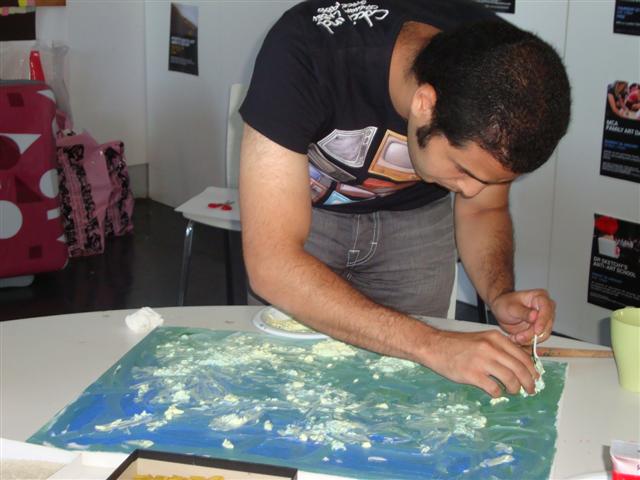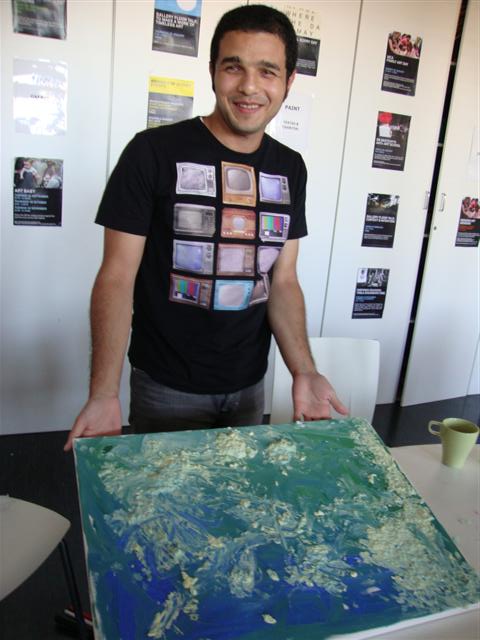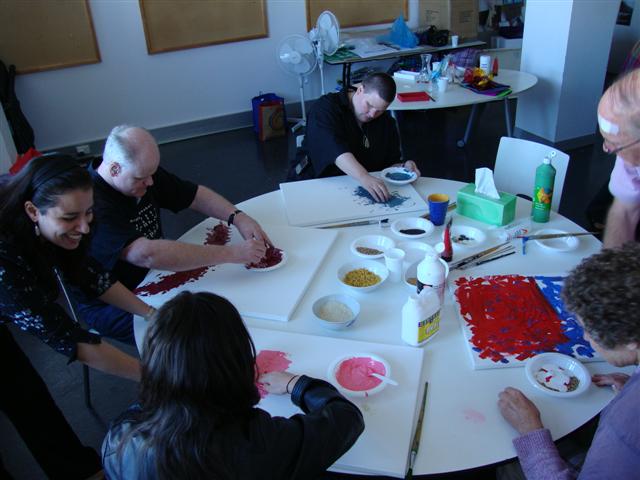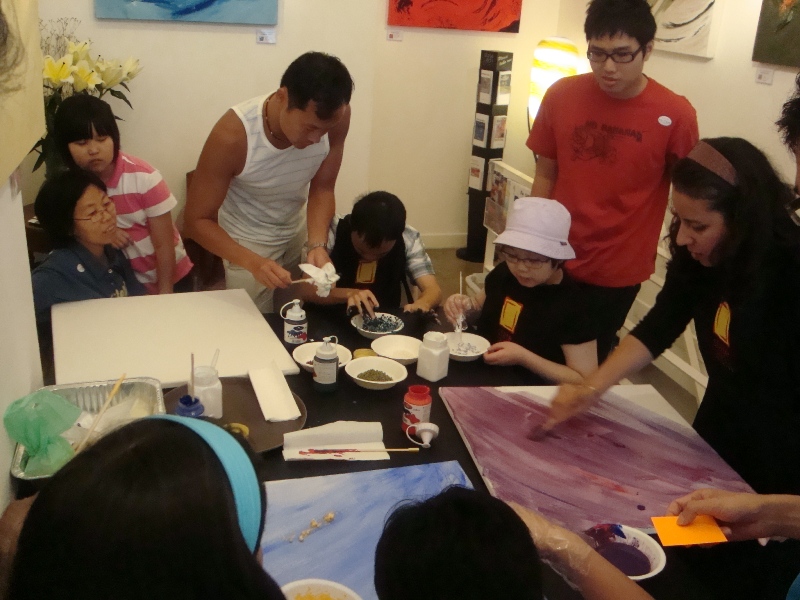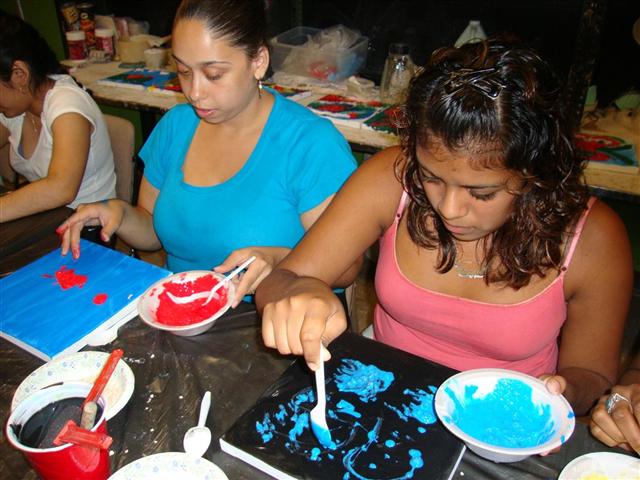Dealing with Stress
There are times when we all feel overwhelmed in life, when it feels like your head is so crowded you just can’t think straight. Over time, unaddressed and left to fester, these negative feelings resulting from anxiety and stress can quickly start to have a detrimental impact on one’s state of mind and overall wellbeing.
Mental Health has traditionally been regarded to be a bit of a taboo subject, particularly amongst men, and unsurprisingly some people experiencing issues such as anxiety, stress and panic attacks have been reluctant to open up and discuss these with specialists, or even family & friends, in fear of being judged or labelled. Living busy lives in a digital age, bombarded with (fake) news, information overload, and trying to “keep up with the Jones’s” on social media where everyone is ‘plugged in’ and always connected, it is difficult to down tools for some ‘me time’. All this has come at a health cost, most acutely amongst the millennial generation which has seen a huge increase in mental health issues. As a result, attitudes towards mental health are changing, helped by the increased spotlight coverage that the subject has been gaining in the media. With the increased resources and funding being allocated to charities and support groups set up to tackle mental health issues, there is now so much more awareness and information available on the issues related to stress. People can now address these issues and gain some comfort and reassurance knowing that they are not alone, and that others can understand what they are going through, and that help is at hand.
Having experienced the terrible effects of stress at various points in my life, I sought out different ways to help me deal with the symptoms. As a result, I now find myself more informed and better equipped to handle similar situations. Some of the techniques I use are: yoga, deep breathing, regular exercise and, last but certainly not least, practising mindfulness using ART!


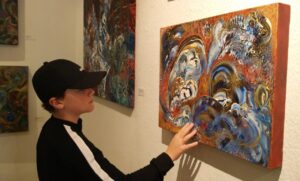
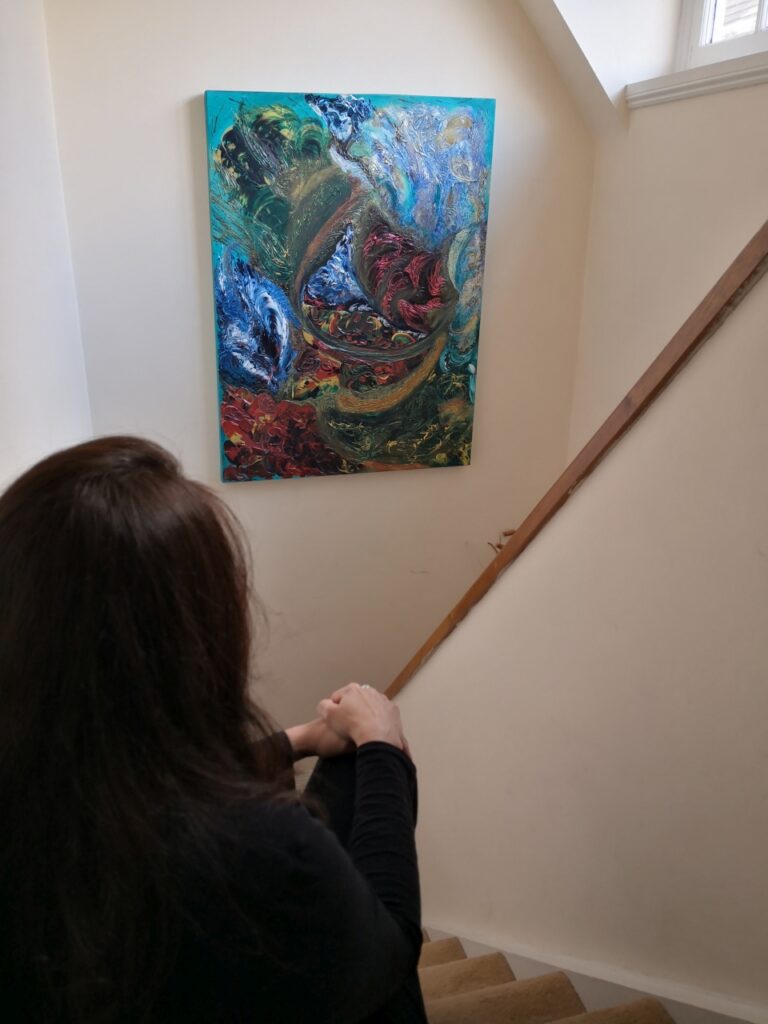
Using Art to Practice Mindfulness
Years ago, I found that simply looking at one of my abstracts really made me focus on something other than my worries, even if just for a few moments. I started to practice mindfulness using one of my favourite pieces – ‘Orianna’ – due to its placement in my home, on the staircase wall. I would walk past this piece each time I went up or down the staircase and it made me feel uplifted instantly, a perfect place where when I had time I could sit on the stairs with no distractions and be alone with ‘Orianna’. This piece has so much detail that it draws you in, it really helped me to just look, discover new sections, kept me engaged and this really made me feel much better. We are talking about 5-10 minutes, not much time needed to feel in a better, calmer state of mind.
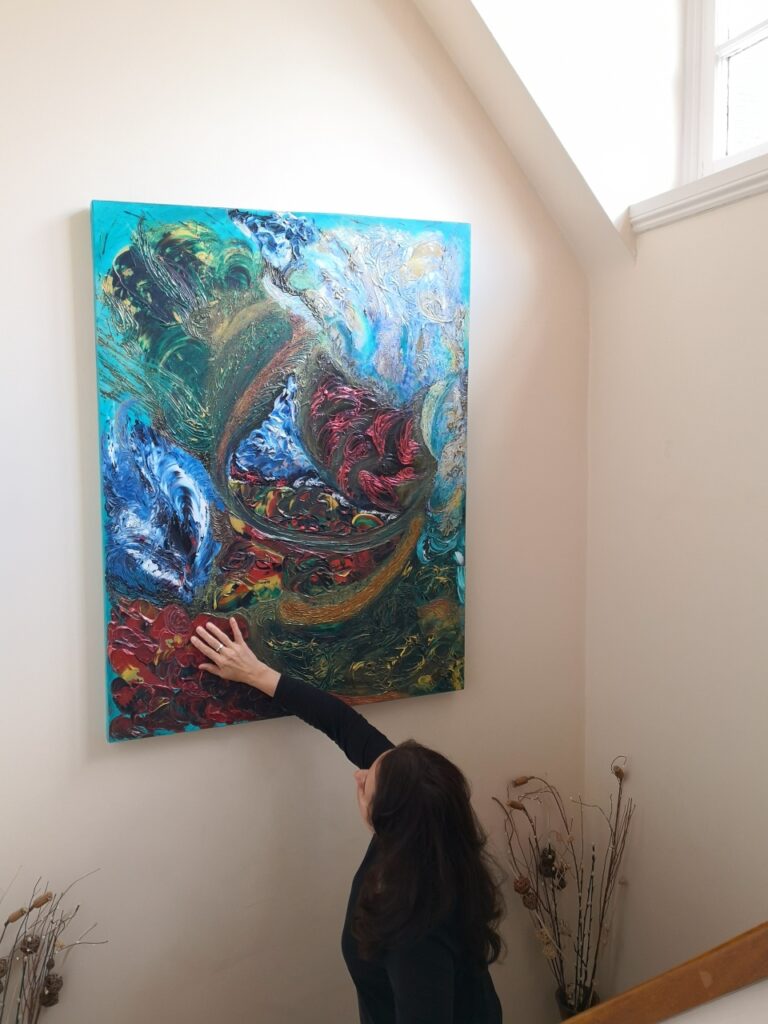
Keeping Things Simple
In all my interactions with people with whom I discuss my approach to art, my ethos/wish is always to keep it very simple. The same principle applies when viewing my abstracts as a focal point while exercising mindfulness, you are simply sitting and looking at the painting for a few minutes, without any constraints or any pre-requisite knowledge of art. Because my work is purely abstract, with no representational shapes, no fixed orientation, not even a title (I ‘name’ my pieces only for reference, e.g. Orianna), your interaction with my work is free of any suggestion, totally uninhibited, completely unrestricted and, over time, almost fluid and different each time. Other external factors – lighting, temperature of the room, the time of day, the orientation of the piece, etc – also come into play to impact the overall viewing experience and further ensure that each interaction with my work is unique.
Your mind is focused and in the driving seat as you immerse yourself into the intricacies of each work, discovering new shapes, textures, and conjuring up new imagery. There is also the added dimension of engaging with my work in a tactile manner, exploring the heavily textured shapes using your sense of touch which many people find to be very calming and therapeutic; often evoking new feelings and emotions within the viewer.
Once you are done, you will realise that you practised mindfulness. You will feel refreshed and in a better state to deal with what was stressing you. A simple yet effective technique that you can do, anytime, to take a break from anxiety and stress. Mindfulness is a quick and easy technique that sounds simple but once you do it and it makes you feel good, it changes you in a very positive way. When you do it regularly and reap the rewards of how wonderful it makes you feel, you will feel empowered in all areas of your life.
Some people find it easy to practice mindfulness without the need for focusing on something but having worked with a very wide range of people, I found that it really helps some people if they can concentrate on something that engages them. For me, it is my art.
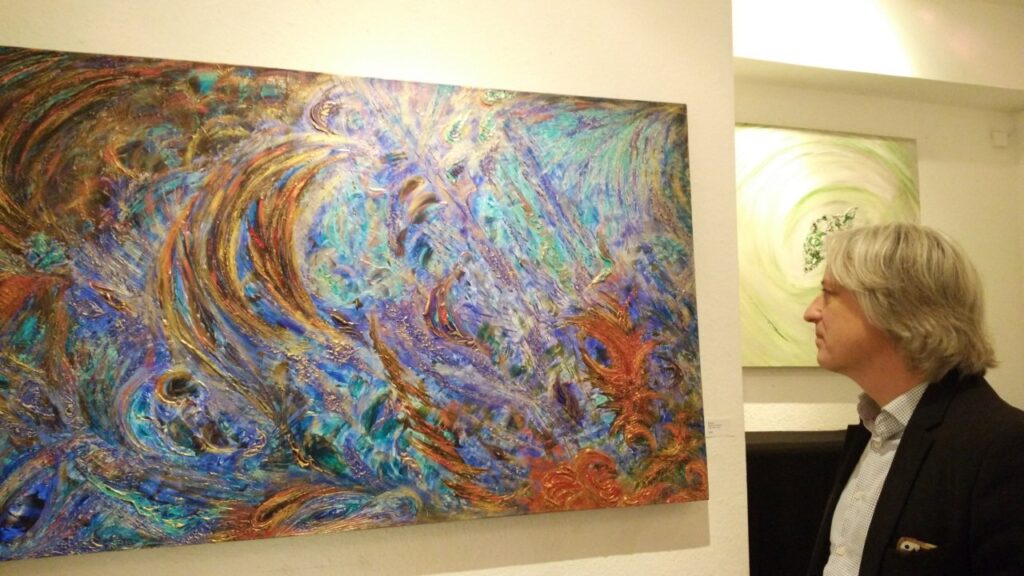
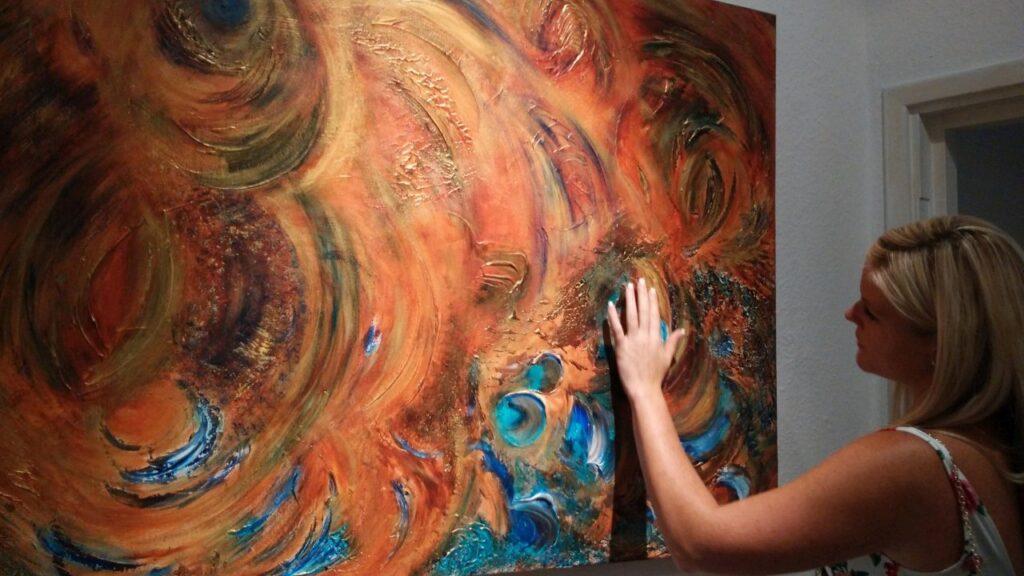
Relieve Stress by Creating Art
Viewing art can be a great way to exercise mindfulness, but if you want to take it to the next level then creating art can be very relaxing and a huge stress reliever. There is absolutely no need for anyone to have ever picked up a brush to create something on a canvas. As you can gather by now, I share art very freely, no rules, no stifling structure. To just make shapes, play with colour and texture is a very enjoyable experience, exactly the kind of thing to do when you want a distraction from the stresses of life. The whole experience can be very therapeutic. The American Art Therapy Association describes art therapy as:
“A mental health profession that uses the creative process of art making to improve and enhance the physical, mental and emotional well-being of individuals of all ages. It is based on the belief that the creative process involved in artistic self-expression helps people to resolve conflicts and problems, develop interpersonal skills, manage behavior, reduce stress, increase self-esteem and self-awareness, and achieve insight.”
Based on the principles of art therapy, I devised my own ‘Art Appreciation Workshop for the Blind and Low Vision‘ which I have conducted for various organisations across the world. The results and feedback from these workshops have not only been fascinating but have also inspired me to adapt the workshop for mainstream schools, museums and various community groups.
Creating art is a brilliant mindfulness practice because it is easy to do and gives instant results by helping to reduce stress. When you are creating art, you lose track of time because you are doing something enjoyable, very different to your daily routines, it truly makes you feel happy!
Being able to just make the marks you want on a canvas, with no restrictions, can often give someone a way to express how they feel, without using words. You can project your emotions and feelings into each brush stroke, you will notice a sense of relief as it is very calming and liberating. Creating art is therapeutic and magical, it helps to reduce stress levels which as a result puts you in a happier state of mind. The more you do it, the more you will love it!
